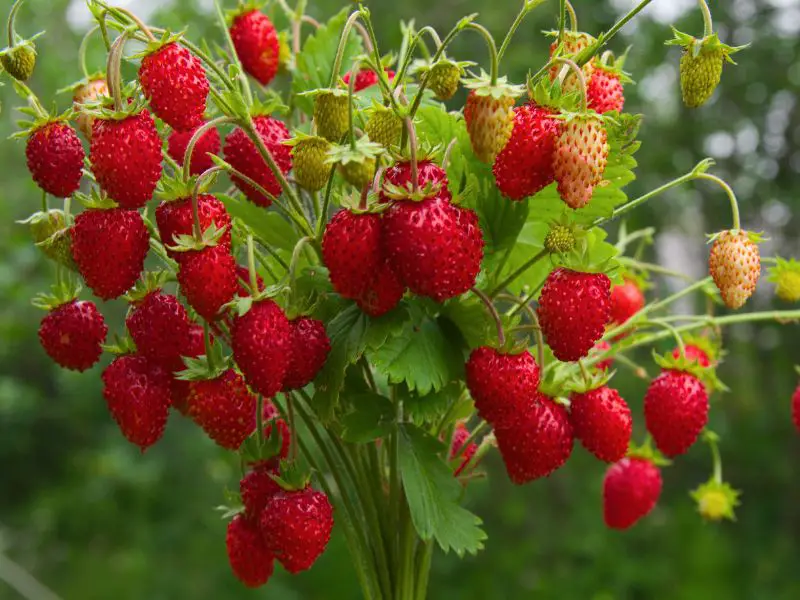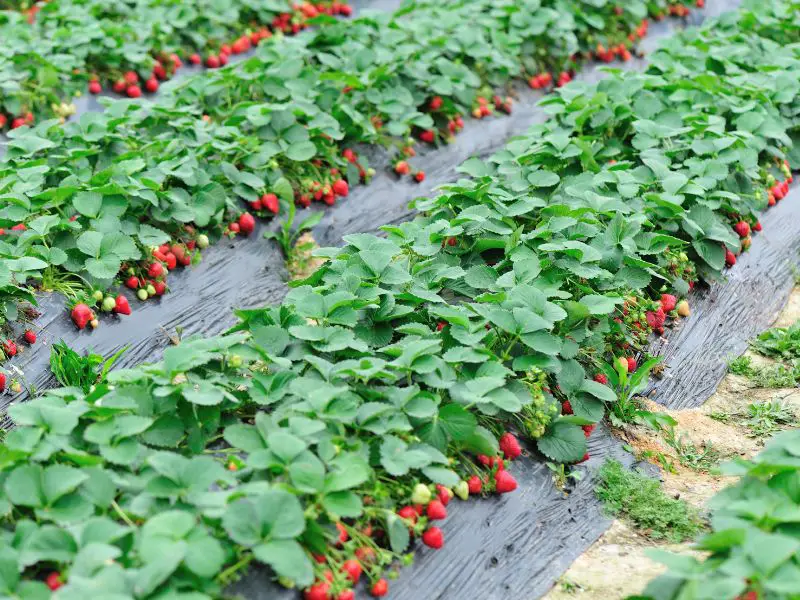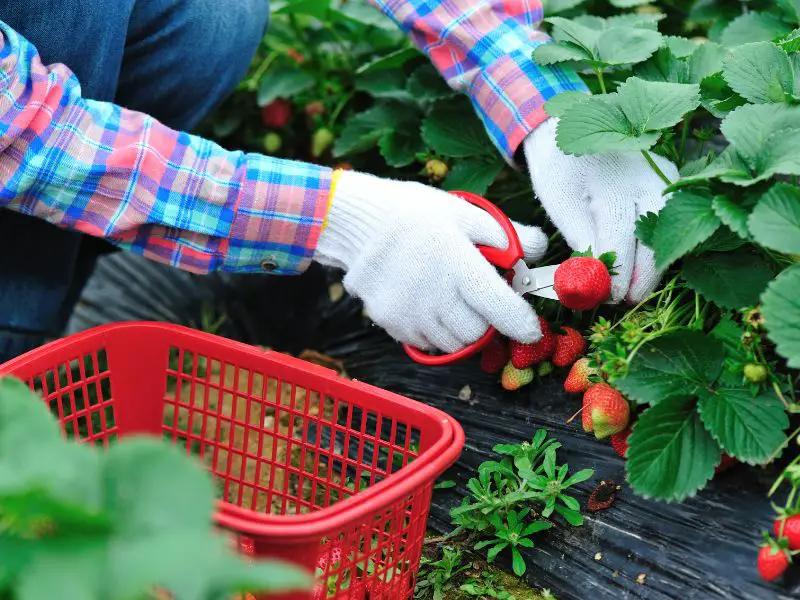It doesn’t matter whether you have a lot of space or experience; learning how to grow strawberries is for everybody.
Believe it or not, growing strawberries can be taught to almost anybody. If you have sun, you have potential! Strawberry plants are very adaptable and remarkably simple to grow.
Strawberries are grown annually or every few years. Anybody with a little outside space can grow fresh strawberries whenever they choose. Also, you don’t need to go outside; a sunny window would do just as well.
This article will look into things you need to know about growing strawberries, from their types and how to grow to preservation.

Types of Strawberries
There are 3 kinds of strawberries any home gardener can grow:
1. June-Bearing Strawberries
June-bearing strawberries yield big between June to July. These are the first berries to ripen and stand out for their sweet taste. But once they’re plucked, it’ll be a whole year until the next harvest.
2. Everbearing Strawberries
Everbearing varieties provide two harvests, the first in early summer and the second crop in early fall. Same as June-bearing, they thrive well in abundant sunlight.
3. Day-Neutral Strawberries
Day-neutral plants produce berries over the season. Day-neutral means they don’t care much about the sunlight length every day. They thrive well in cold temperatures.

How to Grow Strawberries
Growing Strawberries From Seeds
The most cost-effective way to accumulate many strawberry plants is to learn how to cultivate them from seed, but doing so takes time and patience since strawberry seeds may take several months to years to bear fruit.
Here’s a trick that likely boosts seeds germination
- Place strawberry seeds in their bags or put them in a plastic baggy, and refrigerate them for a month. (This way, strawberry seeds would think it’s wintertime and would germinate faster.)
- Remove the seed from the refrigerator and wait until it heats to room temperature.
- Using a tray, fill it with compost, and sow the seeds on top of the soil.
- Do not cover the seeds.
- With a propagator, thoroughly cover the tray to keep it warm, moist, and with good lighting until it grows. Give it about two to three weeks; you’ll see results.
- Within two months, these seeds are now a plant ready to pot on their permanent positions.
Growing Strawberries From Runners
Runners are these long stems stretching out from your plants. Growing strawberries from runners are probably the best way to produce those sweet berries.
Reproducing a plant from a runner is a fail-safe method with little risk. Strawberries share the same genetics, so if you grow some from seed, you’ll end up with identical plants.
Here are some tips you can follow.
- Use runners from healthy plants so you don’t pass diseases to new crops.
- Pick runners from plants that are at least one year old.
- Cut off any runners sprouting from your young plants because these compete for energy. Cut off from where it sprouts so the main plant can focus its energy on its berries instead.
Growing Strawberries in Raised Beds
Strawberry plants do very well in raised beds. They tend to heat up faster and drain more quickly, which is suitable for water-sensitive strawberries.
- Mix compost into the soil to nourish the plants and make it easier for the roots to take hold.
- Plant accordingly, above the hills or straight raised rows.
Growing Strawberries in Containers
Strawberries can be grown in various containers, from ceramic and terracotta pots to plastic planters, but any container with drainage holes will do. Soil dries up quicker in pots, so monitor the water level more frequently. If you’d want to have fruit beyond spring, you may want to consider day-neutral or everbearing cultivars.
Harvesting Strawberries
Harvesting strawberries is a really easy process, in only a few steps you will be harvesting the most delicious sweet strawberries to eat!
- Fruit is ready to harvest 4 to 6 weeks after the plant blossom
- Cut the stem with scissors or clippers. Avoid pulling up the fruit, as you may damage the plant.
- For June bearing strawberries, harvesting berries can last up to three weeks

Preserving Strawberries
Strawberries have a famously limited shelf life, so understanding how to preserve them will guarantee you receive the greatest taste whether you eat them six months from now.
1 to 2 days
If you don’t want to put your fresh strawberries in the fridge right away, they’ll be good on the counter for a few days. Remove any bruised or otherwise blemished berries and lay the remaining berries in a woven basket to allow for sufficient airflow. Don’t remove stems to protect the mold-prone flesh from exposure. Refrain from washing the berries as they absorb water, making them more susceptible to spoilage.
3 to 7 days
Moisture is the number one enemy of strawberries. To combat this, pack strawberries lightly in an open container or large pan lined with paper towels to help absorb excess moisture from the fragile berries. Once chopped or hulled, strawberries should be kept in an airtight container to prevent mold and bacterial growth, reducing shelf life.
8 days to 6 months
Strawberry dry-freezing can keep most of the taste and texture for up to six months and may be preserved for up to a year (with some loss of quality). Some are canned and frozen in syrup, but it becomes so mushy it’s best for baking or stirred in oatmeal or yogurt. Strawberry jams also last for months.
Author’s Note
Out of all fruit, strawberries are one of the most enjoyable varieties to grow. It’s uncomplicated and straightforward. All you need is a little knowledge to get started, although it would take several months to a few years to be able to taste the fruits you grew. Follow these tips, and you’ll surely enjoy your strawberries in the garden. We hope this article was able to give you some ideas on how you should get started with your strawberry garden.
You’ll Love These Gardening Tips: Best Way to Grow Herbs Indoors, Designing a Permaculture Garden, How to Start an Indoor Vegetable Garden


2 thoughts on “A Beginner’s Guide to Growing Strawberries: Tips and Tricks for Beginner Gardeners”